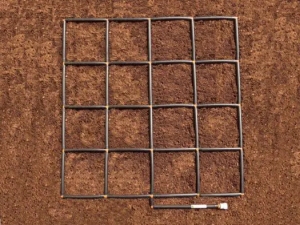 Being an eco-conscious person doesn’t mean you have to give up all your favorite products. Instead, it’s important to look at the big picture and make sure you’re getting your money’s worth out of purchases.
Being an eco-conscious person doesn’t mean you have to give up all your favorite products. Instead, it’s important to look at the big picture and make sure you’re getting your money’s worth out of purchases.
The term ‘sustainable’ has been around for a long time. You’ve likely heard or used it yourself. But what does it mean? In the past, sustainability has been equated to environmentally-friendly or eco-friendly. Well, this is a mistake. As with any term, it’s had its share of misuse.
Regardless of whether you are environmentally friendly or eco friendly, sustainability is not a lifestyle choice, but a way of thinking.
For instance, investing in a garden watering system can mean that we can grow organic vegetables without the need for polluting chemicals to be involved. We are giving our growing plants the best chance to grow naturally. The vegetables produced will then taste better too.
These types of irrigation systems are easy to connect and assemble, and are the solution to growing better natural food at home, in an allotment, or field as part of a farming or market gardening business.
There are many ways to go green, so why choose one over the other?
Filling up your gas tank with ethanol may be the long-term solution, but it’s not cheap to buy or store. Replacing your car with a hybrid can save you money in the long run, but it’s not the best option for everyone.
Then there’s recycling; it’s great for the environment, but it’s not cheap. So, how do you find the sustainable swap that’s right for you?
To be sustainable, food production must be completed in a way that’s good for the environment, but this process is rarely completed easily. From creating an alternative to creating fertilizers, making an alternative is always easier than creating fertilizers. So what are the options? Below are some sustainable swaps to consider.
♦ Invest in vegetable garden irrigation and grow the majority of your food instead of buying it
♦ Buy organic – as opposed to processed foods in packets
♦ Replace disposable diapers with cloth diapers
♦ Use reusable water bottles instead of plastic bottled water
♦ Wash clothes in cold water
♦ Install solar panels on homes
♦ Use a solar phone charger
♦ Use an electric toothbrush instead of a manual toothbrush
♦ Use bamboo furniture
♦ Use energy-efficient lightbulbs
♦ Use a hybrid car instead of a gas car
♦ Use natural cleaning products
♦ Switch to renewable energy
♦ Replace your dishwasher with a high-efficiency model
♦ Use a clothesline instead of a dryer
♦ Take public transportation
♦ Reduce your meat intake
♦ Switch from bottled water to a water filtration system
♦ Switch from chemical-based cleaning products to naturally derived cleaning products.
The above list should help you in making a green move, that will bring peace of mind and a positive feeling to your home.
The final factor in determining the success of these green swaps is how much time and energy you are willing to put into them. You’ll find that once you make a few green swaps, you’ll be inspired to make more.
As more environmentally conscious people are switching to reusable and reusable-friendly products and services, the need for sustainable clothing and footwear also increases.
This is where sustainable swaps come in: you can swap your worn-out clothes, shoes, and other new, reusable, and recycled items.
Sounds great, right? Well, it can be, but often it’s not, and that’s where the idea of sustainable swaps comes in handy.
It’s often said that if you want to keep the earth, you have to do it without taking from it. I find that to be true, but it’s also true that the earth needs us to take care of it—and what better way to spend time with the earth than to have a meaningful relationship with it?
When I look out my window, I see a beautiful landscape of trees, flowers, grass, and wildlife. It’s simply good to care about how these things are cared for.
Conclusion
In conclusion, I suggest a small change to your routine to increase sustainability. By replacing your morning coffee with a cup of warm lemon water, you’re able to skip the plastic cup from the coffee shop.
Every day, new sustainable swaps are being tried and tested around the world. From community gardens, to no-waste workspaces to home composting, the possibilities are endless.
So, let’s all do our part to live more sustainably by swapping out the things we use every day.
You can see that with just a little planning and effort, you can make small changes to reduce your impact on the planet. Try out these sustainable swaps, and you’ll feel good about doing your part to help the planet.
Irrigate your garden effectively so that you can make it a source of sustainability in terms of the environment.
An automatic watering system will save much time in watering the area where you are growing, ensuring that the soil is always moist to create the ideal conditions, whether it is food or flower seeds you have sown.
Shift Frequency © 2021 – Vegetable Garden
Irrigation and Sustainable Swaps
